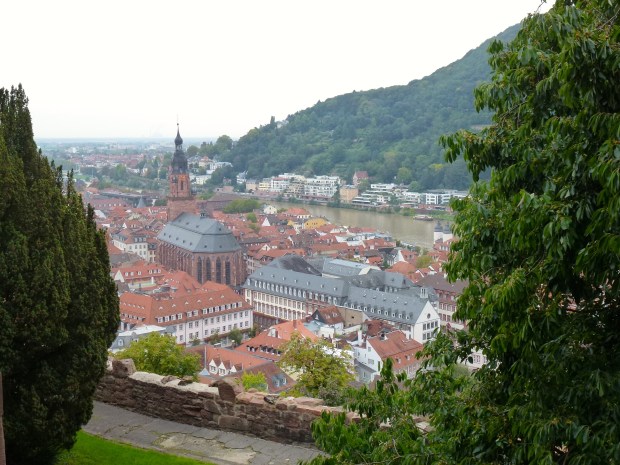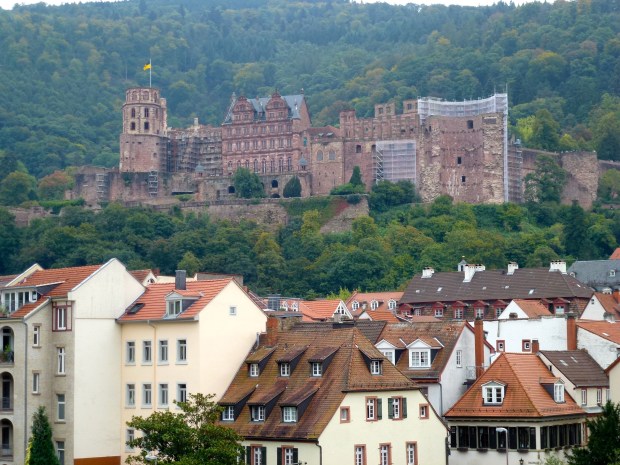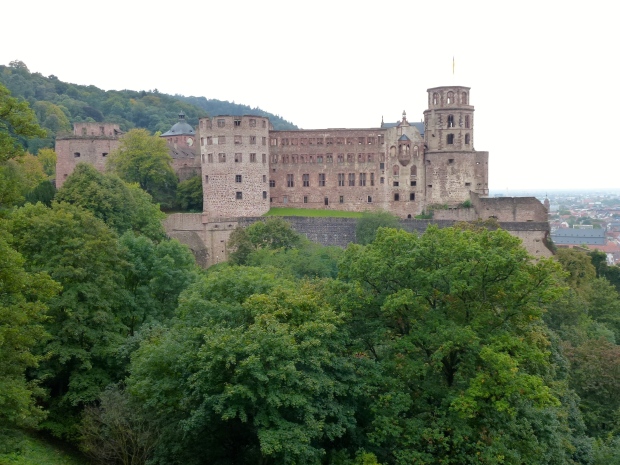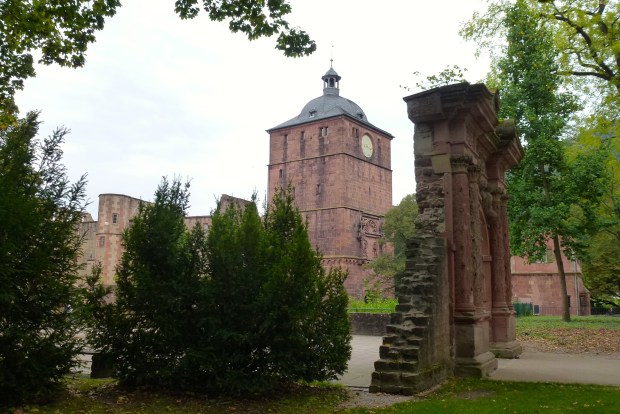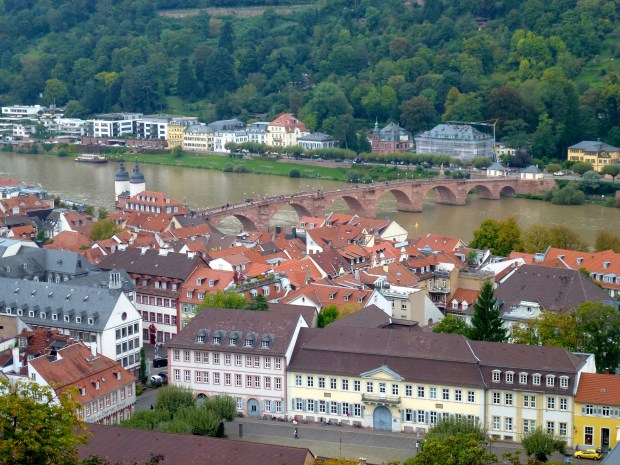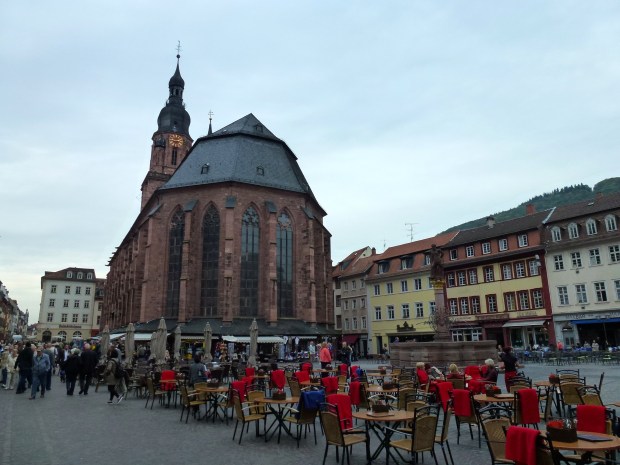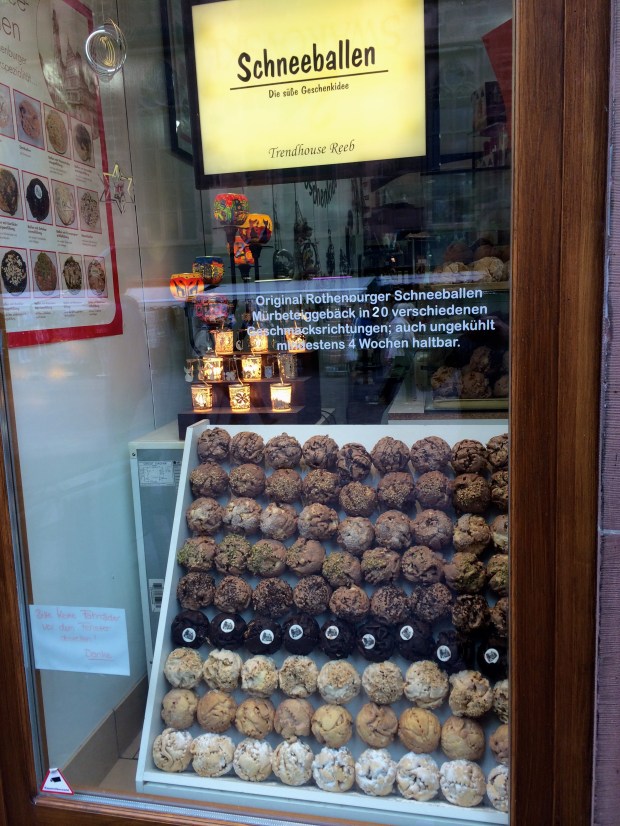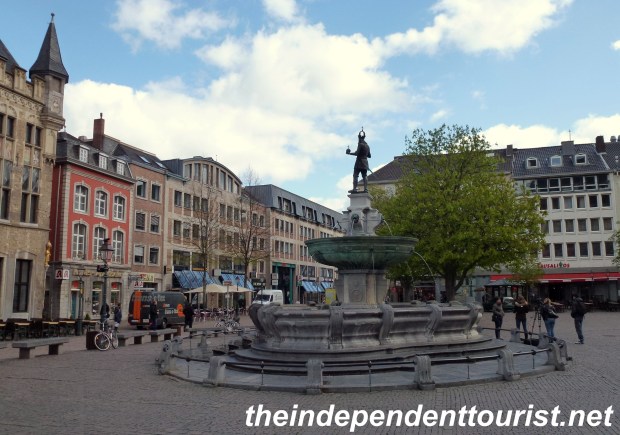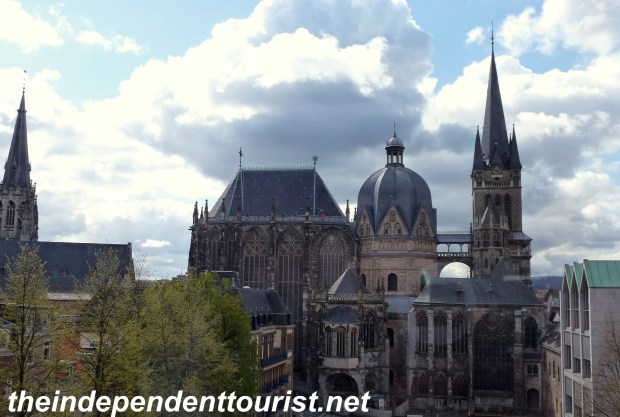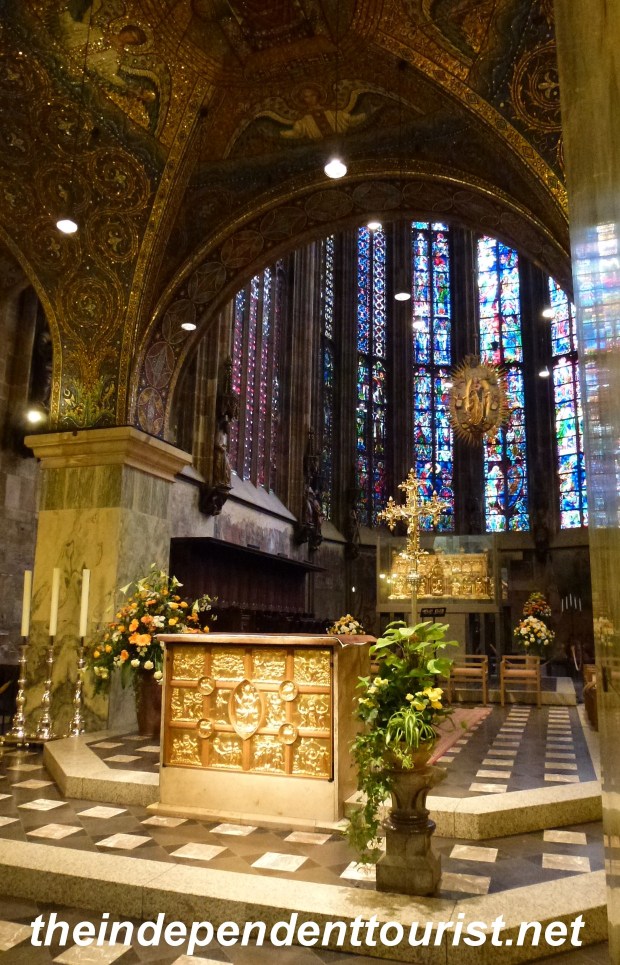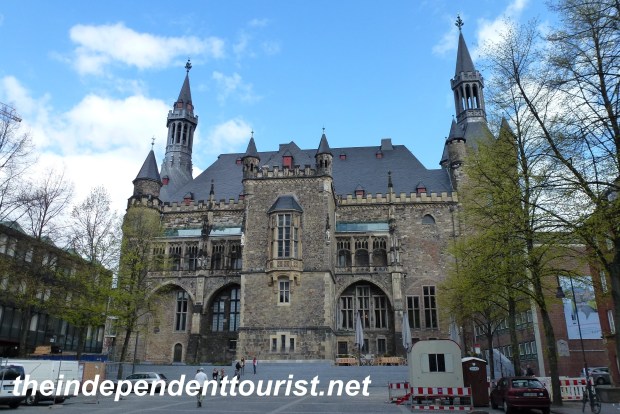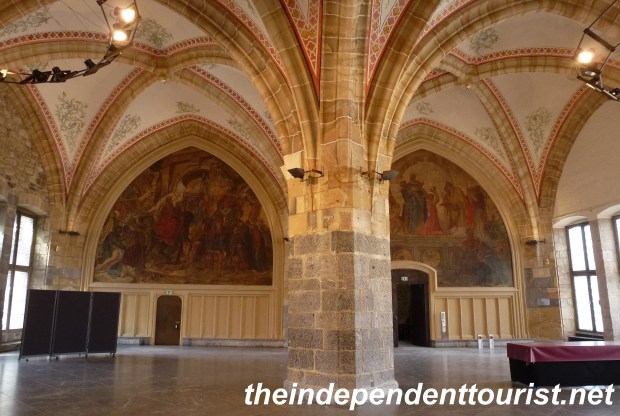The Romantic Road, which winds its way through scenic old towns from central to southern Germany, covers a distance of almost 400 km (250 miles). It was a medieval trade route and several towns were at crossroads on that route.
This post will cover two of those scenic towns and the world famous Neuschwanstein Castle.
Rothenburg ob der Tauber. Rothenburg (located on the Tauber river and hence its name) is definitely one of the most interesting (and popular) small towns in Germany. It was saved from destruction during World War II by an American general, who, knowing of its historical significance, agreed not to bombard the town if it surrendered, which it did. Thank goodness. It retains its medieval feel, and there are lots of quaint buildings; most of which were built before 1400.
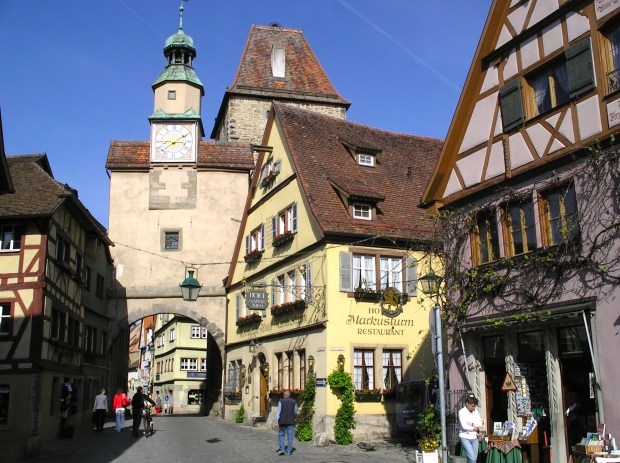
Every street is a postcard view in Rothenburg.

One of the most famous street scenes in Rothenburg.
The most popular time to visit Rothenburg is December. It has a famous Christmas festival and market. With a little snow it would a picture-perfect Christmas village. We visited during the summer and had no complaints.
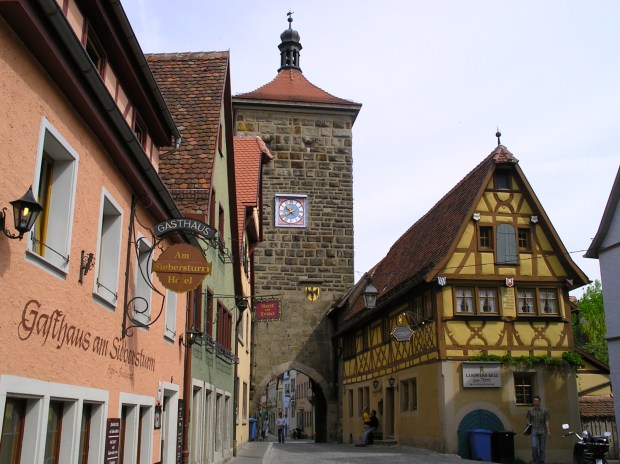
Another view of Rothenburg. There was an older inner section of the medieval town and hence why there are so many gates.
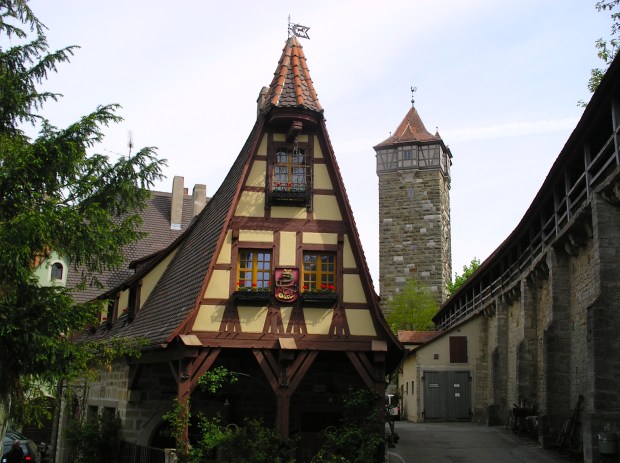
A timbered house, tower and section of the medieval wall in Rothenburg.
There are several “don’t miss” things to do in Rothenburg:
- Walk the town’s surrounding medieval walls on an old boardwalk.
- Visit Medieval Crime and Punishment Museum, which contains all kinds of creative medieval torture instruments.
- Take the Night Watchman’s tour. Hans Georg Baumgartner has been doing these tours for years, and they are a blast. He tells a bit about the history of Rothenburg with lots of humor as he walks you around the old town at dusk. He conducts tours in English and German at different times.
- Visit St. Jakob’s Church, which houses the Riemenschneider wood carving (Altar of the Holy Blood, 500 years old and 35 feet high).

Hans Georg Baumgartner starting his Night Watchman’s tour in Rothenburg.
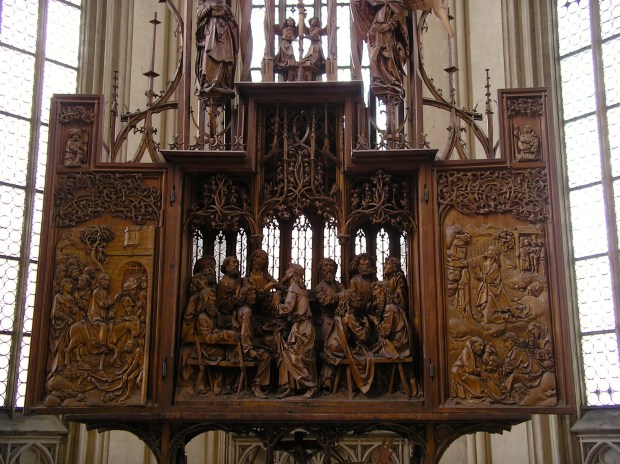
The famous Altar of the Holy Blood by Tilman Riemenschneider. The carving took 5 years (1499-1504) to create. It’s located in the 14th century St. Jakob’s church in Rothenburg.
Dinkelsbühl. This great town is considered Rothenburg’s “little sister” and is only 49 km (30 miles) south of Rothenburg.
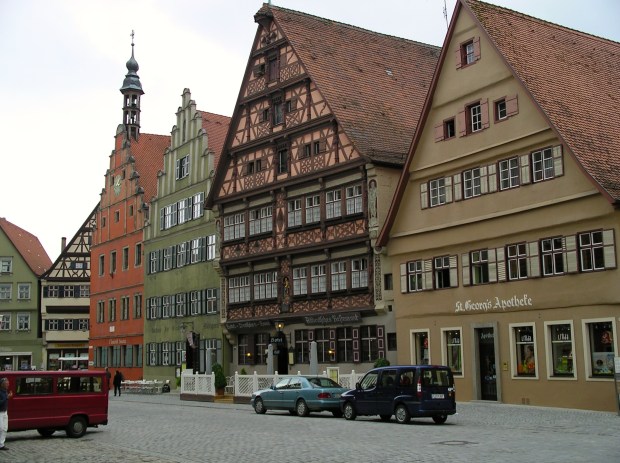
Street scene in Dinkelsbühl.
It has a moat, towers, gates, timbered buildings and a medieval wall surrounding the town (which, in addition to Rothenburg, is one of the few remaining in Germany). We found Dinkelsbühl a bit less touristy than Rothenburg. Amazingly it also miraculously escaped damage in World War II, except for a broken window in St. George’s Minster.

A tower, moat, and wall surrounding Dinkelsbühl.

One more scenic view outside the walls of Dinkelsbühl.
Don’t miss climbing the tower connected to the 15th century St.George’s Minster. The tower was originally a 12th century free standing structure, but later became part of the church structure.
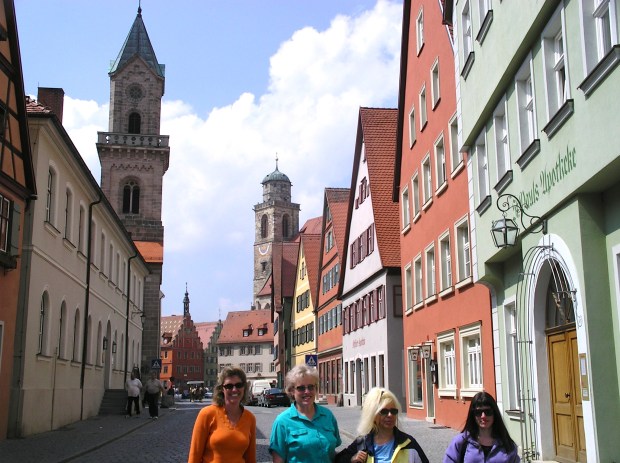
The tower of St. George’s Minster is in the distance.
Neuschwanstein Castle. Just about everyone has seen a picture of this castle, nestled against the Bavarian Alps. This well-known castle marks the southern end of the Romantic Road, near the town of Füssen.
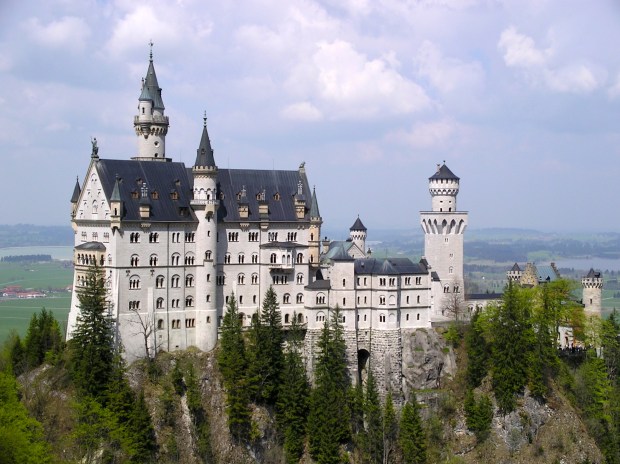
This image of Neuschwanstein was taken from Mary’s Bridge, a short hike to the south of the castle.
It’s been said that this castle was the inspiration for Cinderella’s castle at Walt Disney World. The castle was constructed by King Ludwig II, King of Bavaria in the late 1800’s.
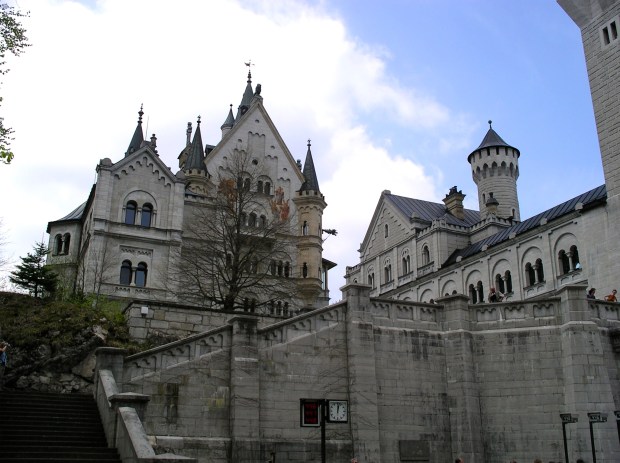
Interior courtyard view of Neuschwanstein Castle.
He died at age 41 in 1886, having lived in his dream castle (a 17 year project) only 172 days! Only about one third of the interior was finished at the time of his death, it remains unfinished to this day.

Interior view of Neuschwanstein castle. The two figures represent the story of Tristan and Isolde, a romantic 12th century story, inspired by Celtic legend.

Looking up at Neuschwanstein Castle from the road you hike up (or take by carriage) to get you to the entrance.
While I prefer older, “real” castles, Neuschwanstein is a beauty and was built on the site of an older medieval castle. To get the best postcard view of this castle nestled in the mountains, you really have to be in a low flying airplane or helicopter. Also in the same area is the older Hohenschwangau Castle, which you see first as you arrive, but we did not take the time to visit it. Be forewarned – this area is mobbed by tourists, so plan your visit well in advance and ensure you get your tours and tickets set before arriving.
